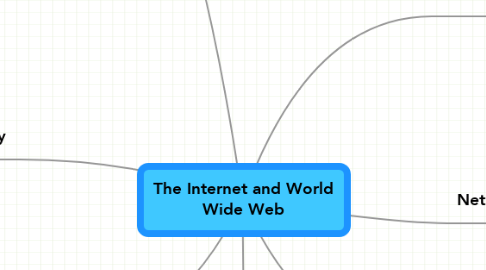The Internet and World Wide Web
by Natthawat Sudsang

1. The World Wide Web
1.1. The World Wide Web, or Web, consists of a worldwide collection of electronic documents (Web pages)
1.2. A Web site is a collection of related Web pages and associated items
1.3. A Web server is a computer that delivers requested Web pages to your computer
1.4. Web 2.0 refers to Web sites that provide a means for users to interact
1.5. A Web page has a unique address called a URL or Web address
1.6. Tabbed browsing allows you to open and view multiple Web pages in a single Web browser window
1.7. There are thirteen types of Web sites
1.8. A graphic is a digital representation of nontext information
1.9. Animation is the appearance of motion created by displaying a series of still images in sequence
1.10. Web publishing is the development and maintenance of Web pages
1.11. A plug-in is a program that extends the capability of a Web browser
1.12. Virtual reality (VR) is the use of computers to simulate a real or imagined environment that appears as a three-dimensional space
1.13. Video consists of full-motion images that are played back at various speeds
1.14. Audio includes music, speech, or any other sound
1.15. Streaming is the process of transferring data in a continuous and even flow
2. Other Internet Services
2.1. E-mail
2.2. e-mail program
2.3. A mailing list
2.4. Instant messaging (IM)
2.5. Chat
2.6. Chat Room
2.7. VoIP
2.8. Newsgroup
2.9. Message board
2.10. FTP (File Transfer Protocol)
3. Summary
3.1. History and Structure of The Internet
3.2. World Wide Web
3.3. Browsing, navigating, searching, Web publishing, and e-commerce
3.4. Other Internet services: e-mail, instant messaging, chat rooms, VoIP, newsgroups and message boards, and FTP
3.5. Rules of netiquette
4. Evolution of The Internet
4.1. The Internet originated as ARPANET in September 1969 and had two main goals
4.2. Each organization is responsible only for maintaining its own network
4.3. Internet2 connects more than 200 universities and 115 companies via a high-speed private network
4.4. Many home and small business users connect to the Internet via high-speed broadband Internet service
4.5. An access provider is a business that provides individuals and organizations access to the Internet free or for a fee
4.6. Online service provider (OSP)
4.7. Wireless Internet service provider (WISP)
4.8. IP address
4.9. Domain name
4.10. DNS server
5. E-Commerce
5.1. History and structure of the Internet
5.2. World Wide Web
5.3. Browsing, navigating, searching, Web publishing, and e-commerce
5.4. Other Internet services: e-mail, instant messaging, chat rooms, VoIP, newsgroups and message boards, and FTP
5.5. Rules of netiquette
6. Netiquette
6.1. Netiquette is the code of acceptable Internet behavior
7. New node
7.1. The Internet is a worldwide collection of networks that links millions of businesses, government agencies, educational institutions, and individuals


